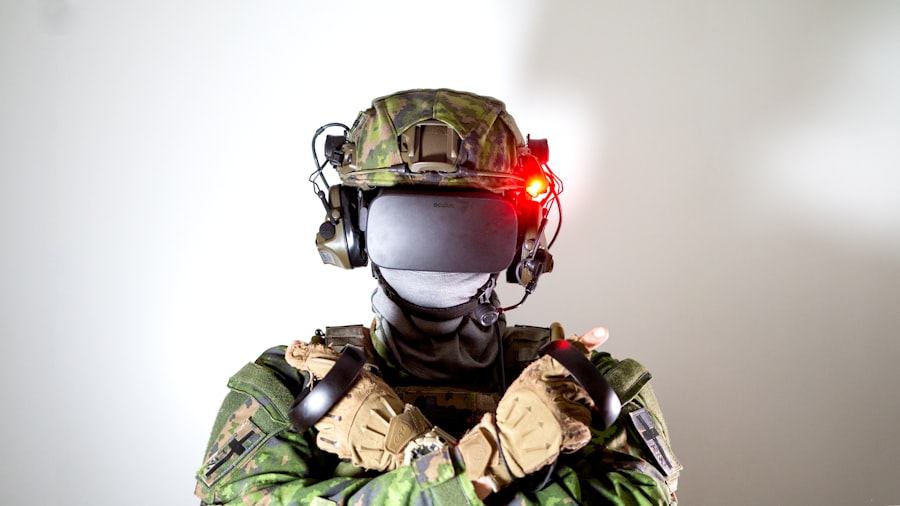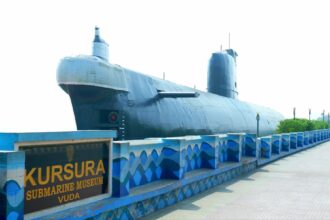Strategic military technology failures have historically played a significant role in shaping the outcomes of conflicts and the evolution of military strategies. These failures can arise from various factors, including design flaws, inadequate testing, and misalignment with operational needs. As nations invest heavily in advanced technologies to gain a competitive edge, the repercussions of these failures can be profound, affecting not only military operations but also national security and geopolitical stability.
Understanding the nature of these failures is crucial for military planners and policymakers as they navigate the complexities of modern warfare. The consequences of strategic military tech failures extend beyond immediate operational setbacks. They can lead to loss of life, diminished morale among troops, and erosion of public trust in military institutions.
Moreover, such failures can provide adversaries with opportunities to exploit weaknesses, potentially altering the balance of power in critical regions. As military technology continues to evolve at an unprecedented pace, the importance of learning from past failures becomes increasingly vital for ensuring future success on the battlefield.
Key Takeaways
- Strategic military tech failures have had significant impacts on operations throughout history.
- Historical examples, such as the Maginot Line and the Soviet Union’s military technology, highlight the consequences of strategic military tech failures.
- Factors contributing to these failures include lack of adaptability, inadequate testing and evaluation, and human error.
- Lessons learned emphasize the importance of adaptability, continuous innovation, and addressing human error in military technology.
- The future of military technology depends on avoiding failures by overcoming budgetary constraints and prioritizing adaptability and innovation.
Historical Examples of Strategic Military Tech Failures
Throughout history, there have been numerous instances where strategic military technology has failed, leading to significant consequences. One notable example is the development of the U.S. Army’s Future Combat Systems (FCS) program in the mid-2000s.
This ambitious initiative aimed to create a networked force equipped with advanced technologies such as unmanned vehicles and integrated communication systems. However, the program faced numerous challenges, including technical difficulties and cost overruns, ultimately leading to its cancellation in 2009. The failure of FCS highlighted the risks associated with overly ambitious projects that lack a clear understanding of operational requirements.
Another prominent example is the British Army’s experience with the Challenger 2 tank during the Iraq War. While the tank was praised for its armor and firepower, it suffered from a critical software failure that rendered its targeting system ineffective in combat situations. This failure not only compromised the effectiveness of the tank but also raised questions about the reliability of advanced technology in high-stakes environments.
Such historical examples underscore the importance of rigorous testing and evaluation processes to ensure that military technologies can perform as intended under real-world conditions.
Impact of Strategic Military Tech Failures on Operations

The impact of strategic military tech failures on operations can be far-reaching and multifaceted.
For instance, during the Gulf War, the U.S.
military relied heavily on advanced technologies such as precision-guided munitions and satellite communications. However, when certain systems malfunctioned or were compromised, it disrupted coordination and led to unintended consequences on the battlefield. Such failures can result in missed opportunities and increased vulnerability to enemy actions.
Moreover, strategic military tech failures can have psychological effects on troops and commanders alike. When soldiers encounter technology that does not perform as expected, it can erode their confidence in their equipment and leadership. This loss of trust can hinder morale and cohesion within units, ultimately affecting overall mission success.
The psychological ramifications of technology failures are often overlooked but are critical to understanding how they influence military operations and decision-making processes.
Factors Contributing to Strategic Military Tech Failures
| Factors | Contributing to Strategic Military Tech Failures |
|---|---|
| Lack of Proper Testing | Insufficient testing of new technologies before deployment |
| Complexity | Overly complex technologies that are difficult to maintain and operate |
| Cost Overruns | Exceeding budgeted costs for development and implementation |
| Changing Requirements | Shifting strategic priorities leading to outdated technologies |
| Interoperability Issues | Incompatibility with existing systems and technologies |
Several factors contribute to strategic military tech failures, often intertwining in complex ways. One primary factor is the rapid pace of technological advancement, which can outstrip the ability of military organizations to adapt effectively. As new technologies emerge, there is often pressure to integrate them quickly into existing systems without fully understanding their implications or limitations.
This rush to adopt cutting-edge solutions can lead to oversight in design and implementation, resulting in failures during critical operations. Another significant factor is inadequate communication between military planners and technology developers. Often, those designing military technologies may lack a comprehensive understanding of operational needs or battlefield realities.
This disconnect can result in products that do not align with the requirements of end-users, leading to inefficiencies and failures in execution. Additionally, bureaucratic hurdles within military organizations can stifle innovation and slow down the adaptation process, further exacerbating the risk of technological failures.
Lessons Learned from Strategic Military Tech Failures
The examination of strategic military tech failures offers valuable lessons for future endeavors in military technology development. One key lesson is the necessity for thorough testing and evaluation before deploying new systems in combat situations. Rigorous testing protocols can help identify potential flaws and ensure that technologies meet operational standards.
Another important lesson is the need for collaboration between military personnel and technology developers throughout the design process. Engaging end-users early on can provide insights into practical requirements and operational challenges that may not be apparent to engineers or designers.
This collaborative approach fosters a more holistic understanding of how technologies will be utilized in real-world scenarios, ultimately leading to more effective solutions that enhance mission success.
Importance of Adaptability in Military Technology

Adaptability is a crucial attribute for military technology in an ever-evolving landscape of warfare. As adversaries develop new tactics and technologies, military forces must be able to adjust their strategies and tools accordingly. The ability to pivot quickly in response to changing circumstances can mean the difference between success and failure on the battlefield.
For instance, during conflicts such as Afghanistan and Iraq, U.S. forces had to adapt their tactics continuously to counter insurgent strategies that evolved rapidly. Moreover, adaptability extends beyond just tactical adjustments; it also encompasses the capacity for technological upgrades and modifications.
Military organizations must be willing to embrace iterative improvements based on lessons learned from previous operations. This commitment to adaptability ensures that military forces remain relevant and effective in addressing emerging threats while maximizing their technological investments.
The Role of Testing and Evaluation in Military Technology
Testing and evaluation play a pivotal role in ensuring that military technologies are reliable and effective before they are deployed in combat scenarios. A robust testing framework allows for systematic assessment of new systems under various conditions, identifying potential weaknesses or failures early in the development process. This proactive approach not only enhances operational readiness but also instills confidence among troops who rely on these technologies during missions.
Furthermore, continuous evaluation throughout a technology’s lifecycle is essential for maintaining its effectiveness over time. As operational environments change and new threats emerge, ongoing assessments can inform necessary upgrades or modifications to existing systems. By prioritizing testing and evaluation as integral components of military technology development, organizations can significantly reduce the likelihood of strategic failures that could jeopardize mission success.
The Need for Continuous Innovation in Military Technology
In an era characterized by rapid technological advancements, continuous innovation is imperative for maintaining a competitive edge in military capabilities. Nations must invest in research and development to explore emerging technologies such as artificial intelligence, robotics, and cyber capabilities that have the potential to revolutionize warfare. Embracing innovation not only enhances operational effectiveness but also helps anticipate future challenges posed by adversaries who are also advancing their technological capabilities.
Moreover, fostering a culture of innovation within military organizations encourages creative problem-solving and adaptability among personnel. By empowering individuals to think outside traditional paradigms and explore unconventional solutions, militaries can better respond to evolving threats and challenges on the battlefield. Continuous innovation ensures that military forces remain agile and prepared for whatever complexities may arise in future conflicts.
Addressing Human Error in Military Technology
Human error remains a significant factor contributing to strategic military tech failures, often exacerbating issues related to technology performance or operational execution. Miscommunication, inadequate training, or cognitive overload can lead personnel to make mistakes that compromise mission success. Recognizing this reality is essential for developing strategies that minimize human error’s impact on military operations.
To address human error effectively, militaries must prioritize comprehensive training programs that equip personnel with the skills needed to operate complex technologies confidently. Simulations and realistic training scenarios can help familiarize troops with potential challenges they may encounter during missions while reinforcing proper protocols for using advanced systems. Additionally, fostering a culture that encourages open communication about mistakes can lead to valuable insights for improving processes and reducing errors in future operations.
Overcoming Budgetary Constraints in Military Technology
Budgetary constraints pose a significant challenge for many military organizations seeking to develop and implement advanced technologies. Limited funding can hinder research and development efforts, leading to compromises in quality or scope that increase the risk of strategic failures. To navigate these constraints effectively, militaries must prioritize resource allocation based on clear operational needs and long-term strategic goals.
One approach to overcoming budgetary limitations is fostering partnerships with private industry and academic institutions that specialize in technological innovation. Collaborating with external entities can provide access to cutting-edge research while sharing costs associated with development efforts. Additionally, adopting agile procurement processes allows militaries to respond more flexibly to emerging needs without being bogged down by bureaucratic hurdles that often accompany traditional funding mechanisms.
The Future of Military Technology and Avoiding Failures
As military technology continues to evolve rapidly, avoiding strategic failures will require a proactive approach that emphasizes adaptability, collaboration, and continuous improvement. Future developments must prioritize user-centric design principles that align closely with operational requirements while incorporating rigorous testing protocols throughout their lifecycle. Moreover, fostering a culture of innovation within military organizations will be essential for staying ahead of adversaries who are also investing heavily in advanced technologies.
By embracing new ideas and encouraging creative problem-solving among personnel at all levels, militaries can enhance their resilience against potential failures while maximizing their technological investments. In conclusion, understanding strategic military tech failures provides invaluable insights into improving future endeavors in defense technology development. By learning from past mistakes and prioritizing adaptability, testing, innovation, human factors management, and resource allocation strategies, militaries can better position themselves for success in an increasingly complex global security environment.
In recent years, the rapid advancement of military strategic technology has been both a boon and a bane for defense systems worldwide. While these technologies promise enhanced capabilities and improved security, they also come with the risk of significant failures that can have dire consequences. An insightful article discussing such failures can be found on In The War Room. This piece delves into various instances where military technology did not perform as expected, highlighting the importance of rigorous testing and contingency planning in military operations. The article serves as a crucial reminder of the potential pitfalls that accompany the integration of cutting-edge technology into defense strategies.
🔍WATCH THIS! The Secret Weakness That Will Break The US Military🧭
FAQs
What is military strategic technology failure?
Military strategic technology failure refers to the unsuccessful development, implementation, or utilization of advanced technology in military operations, which can result in significant setbacks or disadvantages for a country’s armed forces.
What are some examples of military strategic technology failure?
Examples of military strategic technology failure include the malfunction of advanced weapons systems, the inability to effectively integrate new technology into existing military infrastructure, and the failure to anticipate and counter emerging technological threats from adversaries.
What are the consequences of military strategic technology failure?
The consequences of military strategic technology failure can range from financial losses and wasted resources to compromised national security and military effectiveness. It can also lead to a loss of strategic advantage and influence in global conflicts.
How does military strategic technology failure impact national defense?
Military strategic technology failure can weaken a country’s ability to defend itself and its interests, as it may result in the inability to effectively deter or respond to threats, as well as the erosion of military capabilities and readiness.
What measures can be taken to prevent military strategic technology failure?
To prevent military strategic technology failure, it is essential to conduct thorough research and development, rigorous testing and evaluation, and continuous monitoring and adaptation of technological advancements. Additionally, effective training and education of military personnel on new technologies is crucial.




